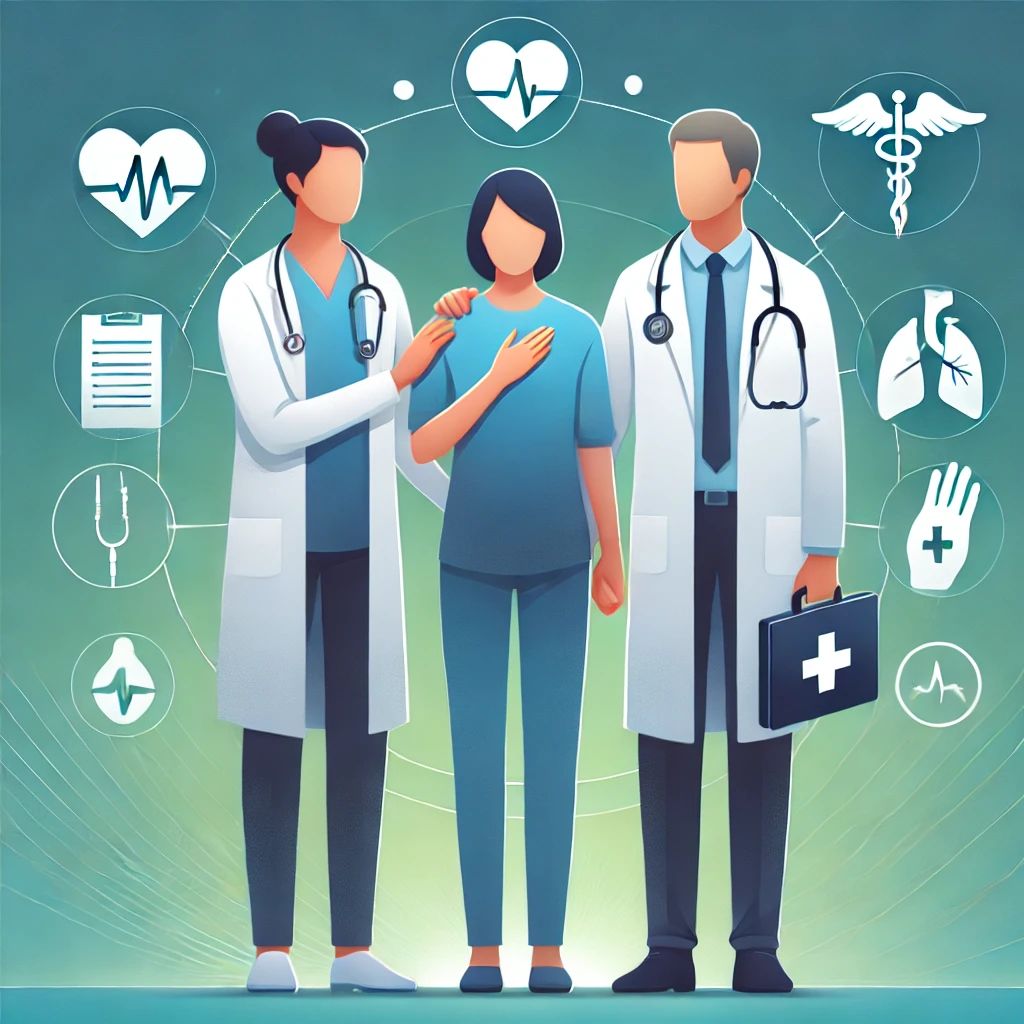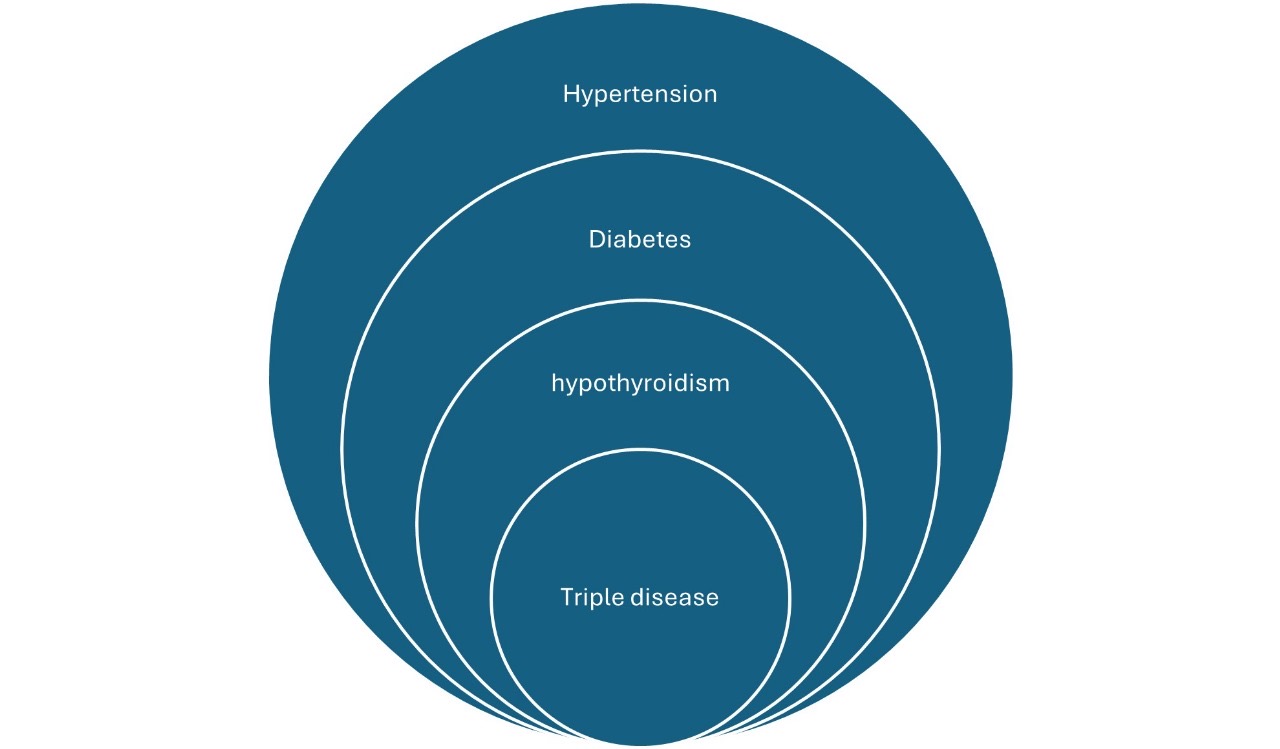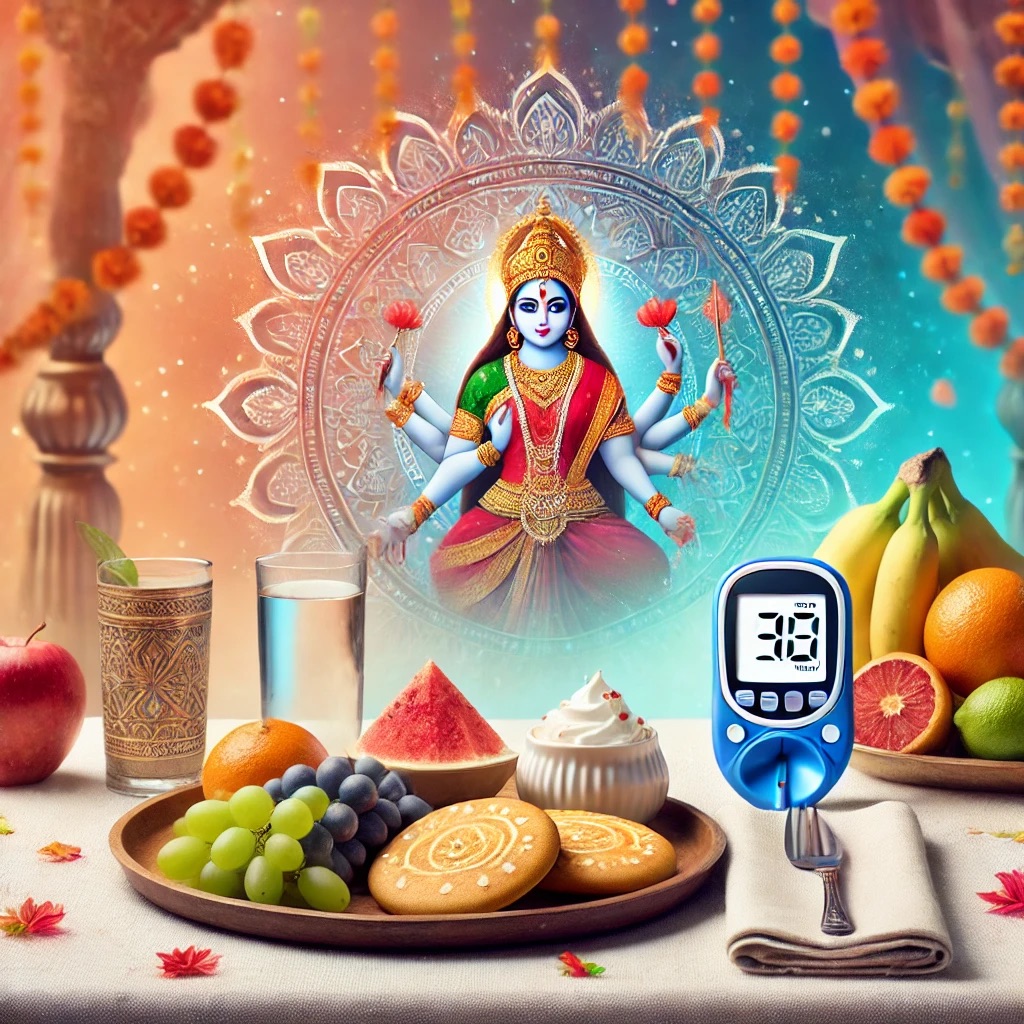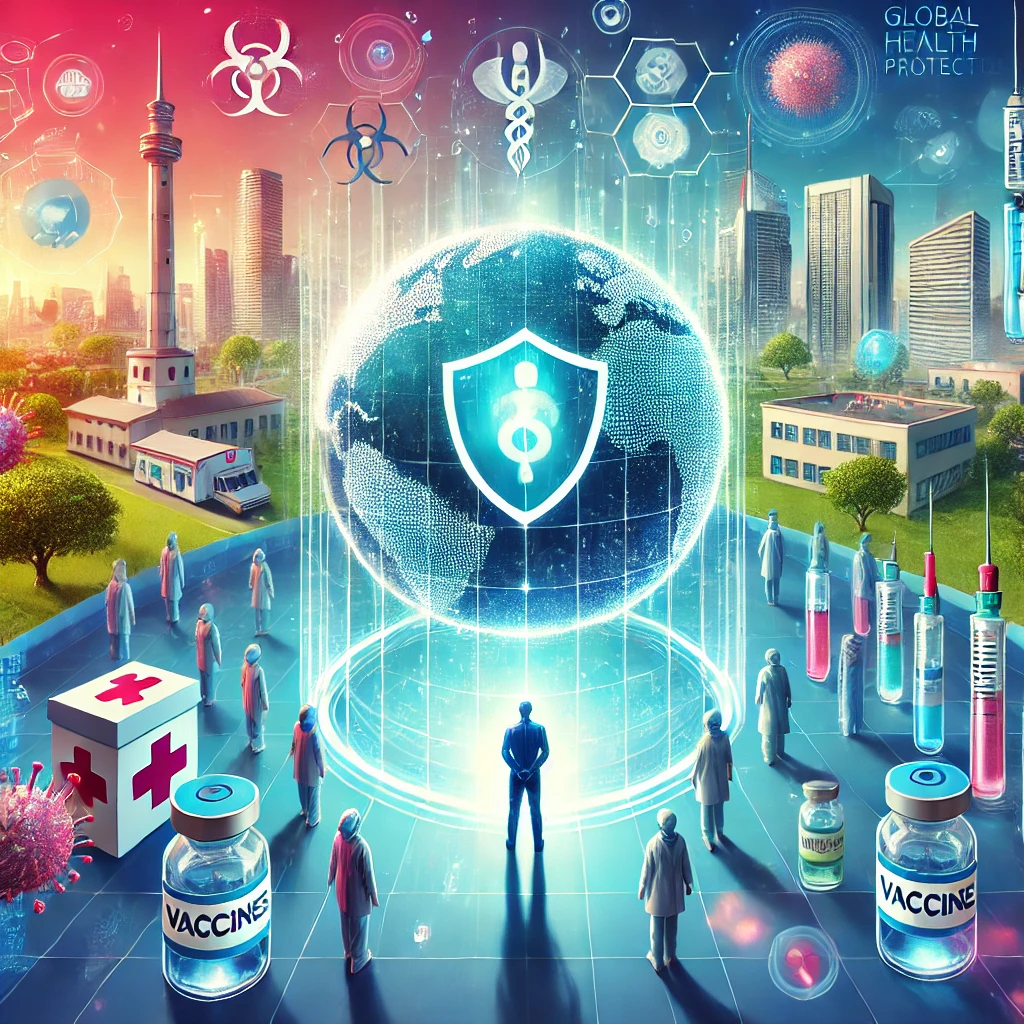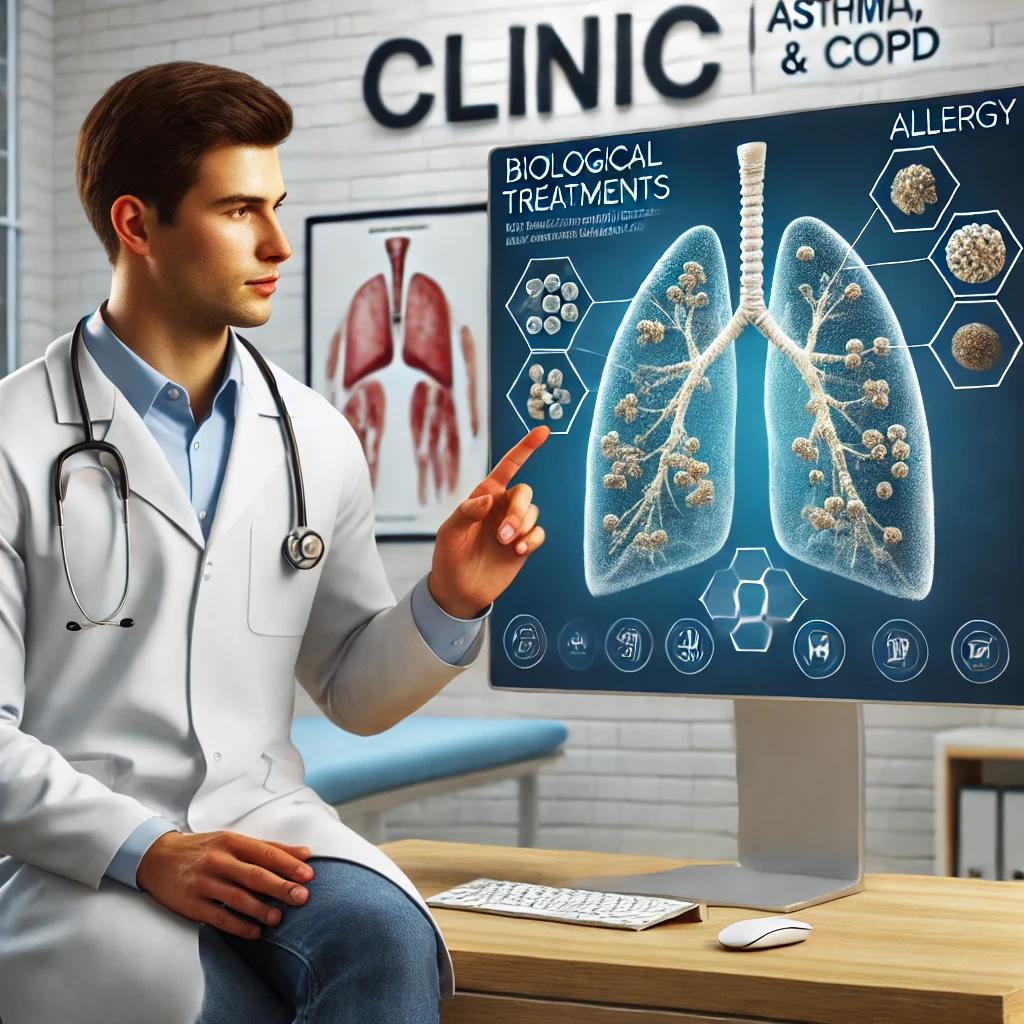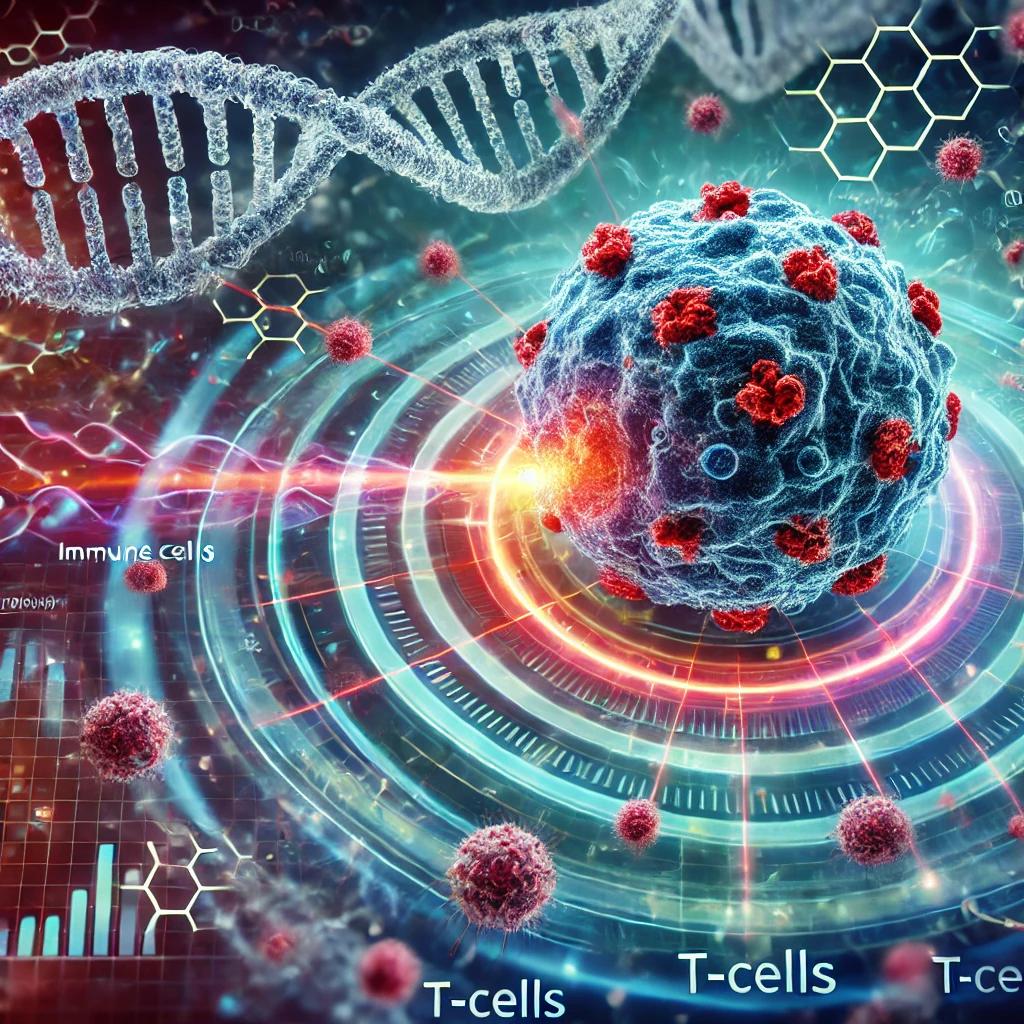Your cart is currently empty!
Blog

Caring for Your Loved One: Protecting Vital Organs with Specialist and Primary Physician Care
“Caring for a loved one facing a health challenge is not just about providing emotional support; it’s about ensuring they receive the best possible care at the right time. Health issues, especially those involving vital organs, require a collaborative effort between caregivers, primary physicians, and specialists. Each plays a unique role—caregivers provide daily support and advocacy, general physicians identify and manage early signs, and specialists offer advanced expertise to protect and preserve critical organ function. Together, this team can make all the difference in a patient’s journey toward recovery and better health.”
Did you know that our vital organs—such as the heart, lungs, kidneys, and brain—contain specialized cells that have a limited ability to repair or regenerate? This makes it crucial to act quickly and seek the right care, involving both your primary physician and relevant specialists.I will try to explain how different organs function, the roles of primary physicians and specialists, and how you can help protect your loved one’s health.
Vital Organs, Specialized Cells, and the Importance of Timely Care
Each vital organ performs specific functions using specialized cells. These cells are limited in number and often cannot regenerate once damaged. Here’s a look at these organs, their specialists, and why timely intervention is crucial:
1. Heart (Cardiologist):
• The heart relies on myocardial cells to pump blood. Damage to these cells, such as during a heart attack, is usually permanent.
• Role of Primary Physician: Identifies early signs of heart disease (e.g., chest pain, high blood pressure) and ensures timely referral to a cardiologist.
• Role of Cardiologist: Treats heart conditions like arrhythmias, heart attacks, and heart failure, preventing further damage.
2. Kidneys (Nephrologist):
• The kidneys filter toxins using nephrons, which are lost permanently when damaged by diseases like diabetes or hypertension.
• Role of Primary Physician: Manages chronic conditions like diabetes and high blood pressure to prevent kidney damage.
• Role of Nephrologist: Focuses on advanced kidney care, including dialysis or slowing kidney disease progression.
3. Brain (Neurologist):
• The brain depends on neurons to control thoughts, movement, and reflexes. Damage from strokes or trauma is often irreversible.
• Role of Primary Physician: Identifies early signs of neurological issues (e.g., sudden weakness or headaches) and provides initial stabilization.
• Role of Neurologist: Treats conditions like stroke, epilepsy, and degenerative diseases to preserve brain function.
4. Lungs (Pulmonologist or Allergist):
• The lungs depend on alveolar cells for oxygen exchange and cilia to protect airways. Chronic inflammation or damage can lead to lifelong breathing issues.
• Role of Primary Physician: Manages respiratory infections and mild breathing issues and refers patients for advanced care when necessary.
• Role of Allergist or Pulmonologist: Addresses chronic conditions like asthma, COPD, and allergies, protecting long-term lung health.
5. Liver (Hepatologist):
• The liver detoxifies the body and produces essential proteins. Damage from conditions like hepatitis or fatty liver disease can lead to failure.
• Role of Primary Physician: Monitors liver health during routine check-ups and identifies early warning signs.
• Role of Hepatologist: Treats advanced liver diseases, preventing irreversible damage.
6. Pancreas (Endocrinologist):
• The pancreas produces insulin and digestive enzymes. Damage to its cells can lead to diabetes or digestive disorders.
• Role of Primary Physician: Diagnoses and manages early diabetes, referring severe cases for specialized care.
• Role of Endocrinologist: Treats complex diabetes cases and hormonal imbalances.
7. Eyes (Ophthalmologist):
• Specialized cells in the retina enable vision. Damage from conditions like glaucoma or diabetes can cause blindness.
• Role of Primary Physician: Screens for vision problems and refers patients for advanced eye care.
• Role of Ophthalmologist: Manages conditions threatening eyesight, including surgeries if necessary.
8. Skin (Dermatologist):
• Skin cells protect against infections and environmental damage. Chronic issues like eczema can weaken this barrier.
• Role of Primary Physician: Treats minor skin conditions and infections.
• Role of Dermatologist: Manages chronic or severe skin issues, providing targeted therapies.
Why Both Primary Physicians and Specialists Are Essential
Primary physicians are often the first point of contact for most health concerns. They build long-term relationships with patients, understand their medical history, and manage overall health. However, when specific organs are affected, they refer patients to specialists for advanced care. Here’s why this collaboration is critical:
• Primary Physician’s Role:
• Early Detection: Identifies symptoms that could signal serious conditions, such as high blood pressure or shortness of breath.
• Preventive Care: Manages chronic conditions (e.g., diabetes, hypertension) to reduce the risk of organ damage.
• Coordination: Works with specialists to ensure seamless care for the patient.
• Specialist’s Role:
• Focused Expertise: Provides in-depth knowledge and advanced treatments for specific organ systems.
• Advanced Interventions: Uses specialized tools and therapies (e.g., angioplasty for heart attacks, immunotherapy for allergies).
• Long-Term Solutions: Helps prevent complications and preserve organ function over time.
Your Role as a Caregiver
As a caregiver, your support is invaluable in ensuring your loved one gets the best possible care. Here are some ways you can help:
1. Monitor Symptoms:
• Keep track of any changes in your loved one’s health, such as difficulty breathing, unusual swelling, or memory issues.
• Share these observations with their primary physician to guide treatment.
2. Encourage Timely Consultations:
• Ensure regular visits to the primary physician for routine check-ups and chronic disease management.
• If symptoms persist or worsen, advocate for a referral to the appropriate specialist.
3. Support Treatment Plans:
• Help manage medications, lifestyle changes, and follow-up appointments.
• Be proactive in asking questions and understanding the treatment plan.
4. Create a Safe Environment:
• For lung conditions, reduce exposure to allergens, smoke, or pollution at home.
• For heart or kidney conditions, encourage a healthy diet and moderate activity, as advised by the doctor.
5. Be Prepared for Emergencies:
• Know the warning signs of critical issues like heart attacks, strokes, or asthma attacks.
• Keep emergency contacts and medical records readily available.
Take Action Today
Caring for a loved one can be overwhelming, but remember that you’re not alone. By working closely with your primary physician and seeking specialist care when needed, you can help protect their vital organs and ensure a better quality of life.

If your loved one is struggling with breathing problems, allergies, or asthma, consulting an allergist or pulmonologist can make all the difference. Visit DrJha.in for more information or to book an appointment.
#BreatheFree #AllergyFree

विजयादशमीः अकाल बोधन / शारदीय नवरात्रः नवदुर्गा के नौ रूपों को आत्मसात् करने का दिन
- नवरात्रि के ९ दिन सभी भक्तगण अपनी श्रद्धानुसार माता के ९ रूपों के पूजन पश्चात दशमी को राम लीला में लंका दहन और रावण वद्ध के द्वारा ख़ुशियाँ मनाते हैं।
- भगवान राम को इस मृत्युलोक में इंसान के रूप में जन्म लेकर रावण को मारने के लिए जब दैवीय शक्तियों की स्थापना करनी पड़ी, तो इसके लिए उन्होंने ९ दिनों तक सृष्टि की शक्ति का आह्वान किया था, जिसे आज हम नवरात्रि के पर्व के तौर पर हर साल याद करते हैं।
- श्रीराम के पहले भी चैत्र मास में नवरात्रि पूजन का विधान था, किंतु युद्ध की समाप्ति के लिए श्रीराम को अकाल हीं शरद ऋतु में नवरात्रि का अनुष्ठान करना पड़ा, इसलिए इसे “अकाल बोधन” के नाम से बंगाली भाषा में जाना जाता है।
आइए आज हम माता के ९ रूपों की व्याख्या सरल भाषा में समझें।
- ब्रह्मांड में, हिमालय की पुत्री देवी पार्वती एक गहन आध्यात्मिक साधना में तल्लीन रहती हैं, जहाँ वे समयानुसार जीवन के विभिन्न चरणों में नवदुर्गा के रूपों को धारण करती हैं। यह यात्रा न केवल देवी की शक्ति को दर्शाती है, बल्कि एक महिला के जीवन के सभी पहलुओं—बेटी, पत्नी, माँ, रक्षक, आशिर्वाद देने वाली का प्रतीक भी है।
1. शैलपुत्री – The Childhood
इस रूप में देवी को एक पुत्री रूप में पूजा जाता है। माता पार्वती का जन्म हिमालय के राजा हिमवान के घर हुआ था। इस रूप में उन्हें शैलपुत्री कहा जाता है, जो प्रकृति और पवित्रता की प्रतीक हैं। इस चरण में, पार्वती का जीवन उनके प्राकृतिक परिवेश से गहराई से जुड़ा होता है, और वे अपनी आगे की कठिन यात्रा के लिए शक्ति और संकल्प एकत्र करती हैं।

2. ब्रह्मचारिणी – The Teenageयह शादी से पहले का समय है। अपने अधूरेपन को पूर्ण करने के लिए, अर्द्धनारिश्वर के स्वरूप को संपूर्ण करने के लिए, शिव को प्राप्त करने के दृढ़ संकल्प के साथ, पार्वती कठिन तपस्या का मार्ग अपनाती हैं। ब्रह्मचारिणी के रूप में, वे कठोर तपस्या करती हैं, अपनी इच्छाओं पर नियंत्रण प्राप्त करने और शिव को प्राप्त करने के लिए। यह चरण पार्वती की अद्वितीय भक्ति और उनकी आंतरिक शक्ति को दर्शाता है, जहाँ वे असीम धैर्य और समर्पण से शिव को प्रसन्न करती हैं।

3. चंद्रघंटा – The Young Ladyभगवान शिव द्वारा विवाह के प्रस्ताव को स्वीकार किए जाने के बाद, पार्वती चंद्रघंटा के रूप में प्रकट होती हैं। उनके माथे पर अर्धचंद्र का घंटा है, जो शक्ति और साहस का प्रतीक है। इस रूप में, पार्वती न केवल एक सुंदर वधू हैं, बल्कि युद्ध के लिए तैयार योद्धा भी हैं, जो हमेशा धर्म की रक्षा के लिए खड़ी रहती हैं। यह उनके विवाहित जीवन की शुरुआत का भी प्रतीक है, जहाँ वे शिव के साथ कंधे से कंधा मिलाकर खड़ी होती हैं।

4. कूष्मांडा – The Pregnant Ladyशिव से विवाह के बाद, पार्वती ब्रह्मांड की सृजनकर्ता के रूप में कूष्मांडा का रूप धारण करती हैं। उनकी रचनात्मक शक्ति से समूचे ब्रह्मांड की उत्पत्ति होती है। यह रूप पार्वती के उस चरण को दर्शाता है, जब वे सृजन की देवी बन जाती हैं और अपने मातृत्व की शुरुआत करती हैं। वह जीवन और ब्रह्मांड दोनों को पोषित करती हैं।

5. स्कंदमाता – The Motherपार्वती कार्तिकेय (स्कंद/ या दक्षिण भारत में मुरुगन) को जन्म देती हैं, जो भविष्य में एक महान योद्धा और दानव तारकासुर का संहारक बनते हैं। स्कंदमाता के रूप में, वे एक स्नेही और संरक्षक माँ बनती हैं, जो अपने पुत्र को युद्ध के लिए तैयार करती हैं। इस रूप में पार्वती की मातृ शक्ति और उनके पुत्र के प्रति उनका असीम प्रेम और संरक्षण झलकता है।

6. कात्यायनी – The Middle age- Symbolic Rebirthएक आम इंसान, प्रौढ़ावस्था के समय खुद को सँभाल नहीं पाता और वृद्धावस्था की ओर अग्रसर हो जाता है। किंतु जैसे-जैसे कार्तिकेय बड़ा होता है और अपने युद्धों के लिए तैयार होता है, पार्वती स्वयं कात्यायनी का रूप धारण करती हैं (उनका महर्षि कात्यायन के घर पुत्री रूप में सांकेतिक पुनर्जन्म होता है) जो अजरता एवं अमरत्व की प्राप्ति का प्रतीक है। यह रूप उनके जीवन के उस चरण को दर्शाता है, जब वे अपने व्यक्तिगत और पारिवारिक दायित्वों से ऊपर उठकर एक ताकतवर योद्धा के रूप में प्रकट होती हैं। यह देवी का आत्म-सशक्तिकरण और कठिनाइयों का सामना करने का चरण है।

7. कालरात्रि – The Fearless & Fearsome ladyयह एक ऐसे माता का रूप है, जो अपने बच्चों के लिए सारे संसार से लड़ सकती है। जब संसार में बुराई और अधर्म बढ़ता है, तो पार्वती अपने भयंकर रूप कालरात्रि में प्रकट होती हैं। यह उनका सबसे उग्र रूप है, जो अज्ञान, भय और बुराई का विनाश करने के लिए प्रकट होता है। इस चरण में पार्वती केवल व्यक्तिगत क्रोध नहीं दिखातीं, बल्कि वह संपूर्ण ब्रह्मांड से अंधकार और अधर्म का नाश करती हैं।

8. महागौरी – The Calm and Mature lady- जो बल से ज्यादा बुद्धि का प्रयोग करती हैंकालरात्रि के विनाशकारी रूप के बाद, पार्वती अपने शांत और सौम्य रूप महागौरी में लौट आती हैं। यह रूप पवित्रता, शांति और करुणा का प्रतीक है। इस चरण में, पार्वती फिर से शिव के साथ मिल जाती हैं और ब्रह्मांड में संतुलन और शांति स्थापित करती हैं। महागौरी का रूप मानसिक और आध्यात्मिक शुद्धि का प्रतीक है।

9. सिद्धिदात्री – The Karm Yoginiअपनी यात्रा को पूर्ण करने के बाद, पार्वती सिद्धिदात्री का रूप धारण करती हैं, जो भक्तों को सिद्धियाँ (आध्यात्मिक शक्तियाँ) प्रदान करती हैं। इस रूप में, पार्वती अपने जीवन के सभी पहलुओं में महारत हासिल कर चुकी होती हैं, और अब वे उन सभी को उनके कर्मों के हिसाब से आशीर्वाद देती हैं, जो ज्ञान और मुक्ति की तलाश में होते हैं। यह रूप देवी के संपूर्ण ज्ञान और शक्ति का प्रतीक है।

निष्कर्ष:नवदुर्गा के इन नौ रूपों के माध्यम से देवी पार्वती की यात्रा एक अद्वितीय परिवर्तन, आत्मनिर्भरता और ब्रह्मांडीय शक्ति की यात्रा है। यह कहानी न केवल देवी के रूपों को दर्शाती है, बल्कि एक महिला के जीवन के सभी चरणों—बेटी, तपस्विनी, युवती, मातृत्व, माता, दार्शनिक, योद्धा, आदर्शवादी और समाजसेवी- का भी प्रतीक है। पार्वती की यात्रा हर इंसान के जीवन में आने वाली चुनौतियों और आध्यात्मिक विकास को भी दर्शाती है, जो हमें आंतरिक शक्ति और ज्ञान की ओर प्रेरित करती है।हम इंसान भले हीं अमर नहीं हों, लेकिन देवी के रूपों का अनुसरण कर मोक्ष प्राप्ति कर सकते हैं, जहाँ हमारी कीर्ति इस भूमंडल पर अमर हो जाती है।

- अद्वैत सिद्धांतः God is One- it’s Nirakar- without any shape, it’s beyond birth or death. It’s omnipresent.
हममें तुममें खड़ग खंभ में, कण कण में भगवान

This concept is difficult to understand, so reserved only for those with deep understanding of Adhyatm. So our ancestors made it easy to understand by giving the concept of Ardhnarishwar, where there is a fusion of masculine energy and feminine energy each complementary to each other and none is superior or complete without another. This energy is made to look like human form for easy correlation. Though we consider presence of god in each and every particle of universe. We worship every single animal, plants, rivers, water bodies, and every aspect of nature.

To make it even simpler came the next concept
त्रिमूर्तिः our ancestors gave the concept of Trimurti where there are 3 major forms of masculine energy in form of Brahma, Vishnu & Mahesh, and 3 major forms of feminine energy in form of Saraswati, Lakshmi & Parvati. These 3 forms symbolises energies responsible for Creation, Nourishment & Destruction respectively.
- To create thins still simpler, our ancestors simplified things in the form of concept of Devata- the one who gives. Here you can worship a specific Devata according to what you desire. Like if you want Strength- you worship Hanuman, to gain knowledge- you worship Ganesh, and so on.
one can try to understand it as subjects of School, College and research. Ultimately all leading to the same result.

Proposed Hypothesis: The Triple Disease and the Role of Obstructive Sleep Apnea
Introduction:
In modern clinical practice, the increasing prevalence of diabetes, hypertension, and hypothyroidism is becoming a significant public health concern. These conditions often co-exist due to common risk factors such as obesity, metabolic syndrome, and aging populations. Based on clinical observations, I propose the term “Triple Disease” to describe the co-occurrence of these three conditions. Additionally, I hypothesize that individuals with Triple Disease may have a higher likelihood of developing obstructive sleep apnea (OSA), a serious but often underdiagnosed condition.Background:
• Diabetes and hypertension are well-known risk factors for cardiovascular complications. Similarly, hypothyroidism is associated with metabolic dysregulation and, in some cases, resistant hypertension. • Current guidelines recommend screening for OSA in individuals with obesity, hypertension, and type 2 diabetes, but the connection with hypothyroidism is less explored. • Sleep apnea has been shown to exacerbate insulin resistance, raise blood pressure, and negatively affect thyroid function, creating a vicious cycle of worsening comorbidities.Hypothesis:
I propose that the co-existence of diabetes, hypertension, and hypothyroidism, which I term “Triple Disease,” should prompt clinicians to screen for obstructive sleep apnea (OSA) in these patients. Although current diagnostic tools like the STOP-BANG questionnaire focus primarily on individual risk factors (e.g., BMI, snoring, age), Triple Disease may be a more comprehensive marker of underlying OSA.Rationale:
1. Metabolic and Endocrine Interactions: • Diabetes and hypothyroidism are both linked to insulin resistance and altered lipid metabolism. These shared pathophysiological pathways increase the risk of obstructive sleep apnea, which further exacerbates metabolic dysfunction. • Patients with resistant hypertension, particularly those on three or more antihypertensive medications, have a higher prevalence of OSA. 2. Polypharmacy as a Red Flag: • Polypharmacy (use of three or more medications) to control any one of these diseases should also be seen as a potential indicator of OSA. For example, patients requiring three or more medications to control blood pressure or glucose levels might have undiagnosed sleep apnea driving the need for aggressive pharmacological interventions.Clinical Implications:
Currently, these ideas are not widely accepted and are based on emerging clinical observations and pathophysiological understanding. However, if validated through randomized controlled trials and longitudinal studies, screening for OSA in patients with Triple Disease could:• Improve diagnostic efficiency for OSA. • Enhance the management of metabolic and cardiovascular conditions. • Reduce the need for polypharmacy by addressing the underlying sleep disorder.Conclusion:
This hypothesis is proposed for further study and randomized clinical trials to validate the association between Triple Disease and OSA. Until more evidence is available, this concept remains an expert opinion based on clinical observation and the current understanding of the pathophysiology of these conditions.Call for Research:
I encourage researchers and clinicians to explore this potential link through well-designed studies, as recognizing the connection between Triple Disease and OSA could lead to better integrated care and improved outcomes for patients with these chronic conditions.Disclaimer:
Please note that this hypothesis is not yet supported by robust clinical evidence and remains speculative until further studies are conducted. It is intended to provoke thought and encourage investigation into this possible link.to share your ideas- use comment button or visit our website.

Triple disease- a condition where Diabetes, Hypertension and Hypothyroidism co exists. 
नवरात्रि के उपवास और मधुमेह: सुरक्षित और वैज्ञानिक दृष्टिकोण
नवरात्रि का पवित्र पर्व शारीरिक, मानसिक और आध्यात्मिक शुद्धि का प्रतीक है। हालांकि, मधुमेह (Diabetes) से पीड़ित मरीजों के लिए उपवास के दौरान ब्लड शुगर को संतुलित रखना जरूरी होता है। सही मार्गदर्शन और रणनीति के साथ, आप उपवास रख सकते हैं और साथ ही अपने स्वास्थ्य का ध्यान भी रख सकते हैं।
मधुमेह के साथ सुरक्षित उपवास रखने के लिए डॉक्टरी सुझाव:
- डॉक्टर से परामर्श लें
उपवास से पहले अपने चिकित्सक से परामर्श लें। खासतौर पर इंसुलिन या ओरल हाइपोग्लाइसेमिक एजेंट्स (OHA) की खुराक को समायोजित करने की आवश्यकता हो सकती है। इंसुलिन डोज़ को समय-समय पर मॉनिटर करना ज़रूरी है, ताकि दिनभर ग्लाइसेमिक नियंत्रण बना रहे।
2. ब्लड शुगर की नियमित मॉनिटरिंग:
फास्टिंग के दौरान हाइपोग्लाइसेमिया (लो ब्लड शुगर) और हाइपरग्लाइसेमिया (हाई ब्लड शुगर) दोनों की संभावना बढ़ जाती है। इसीलिए, ब्लड शुगर मॉनिटरिंग दिन में 2-3 बार करें, खासकर सुबह और रात के भोजन के बाद। अगर ग्लूकोज स्तर 70 mg/dL से कम या 300 mg/dL से अधिक हो, तो तत्काल चिकित्सक से संपर्क करें।
3. दिन में थोड़ी-थोड़ी मात्रा में फल और तरल पदार्थ लें:
फलों का सेवन करते समय ध्यान दें कि हाई-ग्लाइसेमिक इंडेक्स (GI) वाले फलों से बचें। सेब, पपीता, और जामुन जैसे कम-GI वाले फलों का सेवन करें। साथ ही, हाइड्रेटेड रहने के लिए नारियल पानी और नींबू पानी (बिना शक्कर) लें।
4. संतुलित पोषण सुनिश्चित करें:
रात के वक्त भोजन में ऐसे खाद्य पदार्थ शामिल करें जो प्रोटीन, फाइबर, और आवश्यक फैटी एसिड से भरपूर हों। उदाहरण के लिए, कुट्टू का आटा या साबूदाना से बनी रोटियां लें, साथ में पनीर और दही जैसी प्रोटीन युक्त चीज़ें शामिल करें। इससे आपको बेहतर सैटायटी (भूख न लगने का एहसास) मिलेगी और ब्लड शुगर का स्तर भी नियंत्रित रहेगा।
5. तले हुए भोजन से बचें:
तले हुए खाने से ब्लड शुगर में अचानक वृद्धि हो सकती है, जो कि मधुमेह के मरीजों के लिए नुकसानदेह हो सकता है। इसके बजाय उबले हुए या भुने हुए खाद्य पदार्थों का चयन करें।
6. डाइट में सॉल्यूबल फाइबर शामिल करें:
सॉल्यूबल फाइबर ब्लड शुगर को स्थिर रखने में सहायक है। लौकी, पालक, और मूली जैसे सब्जियां फाइबर में उच्च होती हैं। आप लौकी का हलवा या लौकी की खीर जैसे व्यंजन बना सकते हैं, जो उपवास के नियमों के अनुसार भी सही हैं।
7. प्राकृतिक स्वीटनर का उपयोग:
यदि मीठे की इच्छा हो, तो कृत्रिम शक्कर के बजाय स्टेविया या सूखे मेवे जैसे खजूर का उपयोग करें। यह ब्लड शुगर में अचानक उछाल से बचने में मदद करेगा।
8. ग्लाइसेमिक वेरिएशन को मैनेज करें:
उपवास के दौरान ब्लड शुगर में उतार-चढ़ाव को रोकने के लिए स्नैकिंग महत्वपूर्ण है। छोटे-छोटे मील्स जैसे मुट्ठी भर नट्स या भुने चने ब्लड शुगर को नियंत्रित रखने में मदद करेंगे।9. वैज्ञानिक अनुसंधान और सुझाव:
अध्ययन बताते हैं कि मधुमेह से ग्रसित व्यक्तियों के लिए लंबे समय तक भूखे रहने से हाइपोग्लाइसेमिया की संभावना बढ़ जाती है, इसलिए उपवास के दौरान पर्याप्त पोषण लेना जरूरी है। इंटरमिटेंट फास्टिंग की रणनीति का उपयोग मधुमेह के मरीजों पर सफल साबित हुआ है, लेकिन इसे सही ढंग से मॉनिटर करना अनिवार्य है।
नवरात्रि की शुभकामनाएं!
Allergy Clinic-Motihari की ओर से, मैं अपने सभी मरीजों को नवरात्रि की हार्दिक शुभकामनाएं देता हूं। यह पावन पर्व आपके जीवन में सुख, समृद्धि और अच्छे स्वास्थ्य का आशीर्वाद लेकर आए। अगर आप मधुमेह के साथ उपवास करना चाहते हैं, तो इन वैज्ञानिक सुझावों का पालन करके आप अपने ब्लड शुगर को नियंत्रित रख सकते हैं और सुरक्षित रूप से अपनी आध्यात्मिक यात्रा का आनंद ले सकते हैं।
BreatheFree #AllergyFree
आपका,
डॉ. विवेक कुमार
Allergy Clinic-Motihari
Dhaka Road, Chhatauni Chowk, Motihari, Bihar – 845401
Contact: 844-845-55-45 | info@DrJha.inइस पोस्ट को अपने दोस्तों और परिवार के साथ साझा करें ताकि वे भी नवरात्रि के दौरान स्वस्थ उपवास रख सकें!


दीपावली: अस्थमा, COPD, और एलर्जी के मरीजों के लिए सावधानियाँ
प्रिय मरीजों,
त्योहारों का मौसम आ गया है। दशहरा और दीपावली जैसे शुभ अवसर हमें जीवन में रोशनी, खुशी और उमंग भरते हैं। लेकिन अगर आपकी सेहत की बात करें, तो कुछ सावधानियाँ जरूरी हो जाती हैं। मेरी ये बातें न सिर्फ मेरे पुराने मरीजों के लिए हैं, बल्कि उन सभी के लिए हैं जो अपनी सेहत को लेकर चिंतित हैं। आइए बात करें कि कैसे आप इन त्योहारों का आनंद लें, पर सेहतमंद भी रहें।
धुएं से सावधान
त्योहार का असली आनंद तब सच्चा होता है, जब सेहत सही होती है। पटाखों का धुआं हवा में प्रदूषक बढ़ाकर सांस लेने में परेशानी पैदा कर सकता है, खासकर अस्थमा, सीओपीडी और एलर्जी के मरीजों के लिए।
• शोध से प्रमाणित: 2016 में Sharma and Dixit द्वारा Journal of Atmospheric Pollution में प्रकाशित अध्ययन में पाया गया कि दीवाली के दौरान PM2.5 और PM10 स्तरों में 30-40% की वृद्धि होती है, जो श्वसन संबंधी समस्याओं को बढ़ाता है।“सांस की राह में हो जब धुआं,
फिर कहां से आएगा त्योहारों का मजा?”लेकिन यह कहने का मतलब यह नहीं है कि आप त्योहार नहीं मना सकते। ग्रीन क्रैकर्स का इस्तेमाल एक बेहतर विकल्प हो सकता है। ये कम धुआं और आवाज करते हैं, जिससे पर्यावरण को भी कम नुकसान पहुंचता है और आपकी सेहत भी सुरक्षित रहती है।
धुआं और एलर्जन्स का असर
प्रदूषण हवा में एलर्जन्स (जैसे परागकण, धूल) की एलर्जनिसिटी को बढ़ा देता है, जिससे सांस संबंधी परेशानियाँ बढ़ जाती हैं।
• वैज्ञानिक प्रमाण: 2015 में Beck et al. द्वारा Journal of Allergy and Clinical Immunology में प्रकाशित एक अध्ययन ने बताया कि प्रदूषण से एलर्जन्स की शक्ति बढ़ जाती है, जिससे एलर्जी और अस्थमा के लक्षण तेज हो सकते हैं।ध्वनि प्रदूषण का प्रभाव
पटाखों का तेज शोर सिर्फ मानसिक तनाव नहीं बढ़ाता, बल्कि अस्थमा और सीओपीडी के मरीजों के श्वसन तंत्र को भी प्रभावित करता है।
• शोध का निष्कर्ष: 2019 में Thompson et al. द्वारा European Respiratory Journal में प्रकाशित अध्ययन में पाया गया कि शोर से श्वसन प्रणाली में तनाव और परेशानियाँ बढ़ सकती हैं।त्वचा एलर्जी और प्रदूषण
दीवाली के दौरान प्रदूषण न सिर्फ फेफड़ों पर बल्कि आपकी त्वचा पर भी असर डालता है, जिससे खुजली, जलन और रैशेज जैसी समस्याएं हो सकती हैं।
• शोध के अनुसार: 2017 में Kim et al. द्वारा International Journal of Dermatology में प्रकाशित अध्ययन से पता चला कि PM2.5 और NO₂ त्वचा पर एलर्जी और संवेदनशीलता बढ़ा सकते हैं।पर्यावरणीय जागरूकता हर त्योहार में जरूरी
कुछ लोग महसूस कर सकते हैं कि पर्यावरणीय जागरूकता अक्सर हिंदू त्योहारों के समय अधिक चर्चा में आती है, जबकि अन्य अवसरों जैसे नए साल की आतिशबाजी या साल भर होने वाले प्रदूषण के स्रोतों पर उतना ध्यान नहीं दिया जाता। हालांकि, यह समझना जरूरी है कि पर्यावरण संरक्षण का मुद्दा सिर्फ एक विशेष त्योहार तक सीमित नहीं होना चाहिए।
चाहे वह दीवाली हो, नए साल की आतिशबाजी, या साल भर होने वाले प्रदूषण के स्रोत जैसे गाड़ियों का धुआं, सिगरेट पीना या औद्योगिक उत्सर्जन—सभी गतिविधियाँ हमारे पर्यावरण और स्वास्थ्य को प्रभावित करती हैं।
इसलिए, त्योहारों के समय पर्यावरण का ख्याल रखना सिर्फ एक जिम्मेदारी नहीं, बल्कि लंबे समय तक हमारे और आने वाली पीढ़ियों के लिए बेहतर जीवन की नींव है। हर त्योहार के दौरान हमें अपनी सेहत के साथ-साथ पर्यावरण का भी ध्यान रखना चाहिए।त्योहार से जुड़ी मेरी कहानी
हर साल इस मौसम में, मेरे पास ऐसे कई मरीज आते हैं जिनकी हालत पटाखों के धुएं या प्रदूषण के कारण बिगड़ जाती है। मैंने देखा है कि थोड़ी सी सावधानी बरतने से ये समस्याएं काफी हद तक रोकी जा सकती हैं। इस बार, मेरी आपसे यही गुज़ारिश है कि आप त्योहार की खुशियों में सेहत का ध्यान रखें और ग्रीन पटाखों का इस्तेमाल करें, जो कम धुआं और शोर करते हैं।
“सुरक्षित त्योहार, स्वस्थ जीवन!”
आपकी सेहत और भोजन की भूमिका
त्योहार के दौरान हल्का और पौष्टिक भोजन खाएं, जिसमें ताजे फल, सब्जियाँ और हाइड्रेशन पर ध्यान दें। ज्यादा तला-भुना और मिठाइयों से दूर रहें। सेहतमंद रहेंगे तो त्योहार का मजा दोगुना होगा।
समुदाय का सहयोग
आप अपने पड़ोसियों और समाज में जागरूकता फैलाएं कि हमारी छोटी जिम्मेदारियाँ दूसरों की सेहत पर असर डालती हैं। पटाखों का कम इस्तेमाल करें और परिवार के साथ प्राकृतिक और सुरक्षित तरीके से त्योहार मनाएं।
मिथक और सच्चाई
बहुत से लोग मानते हैं कि पटाखों का धुआं केवल कुछ घंटों का असर डालता है, लेकिन सच यह है कि यह कई दिनों तक हवा में बना रहता है। इन मिथकों को तोड़ना जरूरी है ताकि हम सब मिलकर सुरक्षित त्योहार मना सकें।
मानसिक स्वास्थ्य
त्योहारों की तैयारियों में तनाव न बढ़ाएं। योग और मेडिटेशन जैसी गतिविधियाँ अपनाएँ ताकि आप मानसिक रूप से भी स्वस्थ रहें। सिर्फ शरीर नहीं, मन की सेहत भी जरूरी है।
पर्यावरण के अनुकूल सुझाव
मिट्टी के दीये जलाएं, जैविक रंगों से रंगोली बनाएं और पर्यावरण को बचाते हुए त्योहार मनाएं। ग्रीन पटाखों का उपयोग कर आप पर्यावरण और स्वास्थ्य दोनों का ख्याल रख सकते हैं।
“प्रकृति से दोस्ती करें, त्योहार की खुशी दोगुनी करें।”
भविष्य की पीढ़ियों की जिम्मेदारी
आज हम अगर अपने पर्यावरण का ध्यान रखेंगे, तो हमारी आने वाली पीढ़ियाँ भी इन त्योहारों की रोशनी में सांस ले सकेंगी। आइए, त्योहार का सही अर्थ समझें और जिम्मेदारी से मनाएं।
सारांश: त्योहार कैसे मनाएं और सेहत भी बनाए रखें
• ग्रीन पटाखों का इस्तेमाल करें। • मास्क और एयर प्यूरीफायर का उपयोग करें। • हल्का, पौष्टिक भोजन खाएं। • ध्वनि प्रदूषण से बचाव के लिए इयरप्लग्स का इस्तेमाल करें। • त्वचा की देखभाल के लिए मॉइस्चराइजर और साफ-सफाई पर ध्यान दें।प्रिय मरीजों, त्योहारों का असली मजा तभी है जब आप स्वस्थ और खुश रहते हैं। परंपराओं का पालन करना महत्वपूर्ण है, लेकिन सेहत को नजरअंदाज नहीं किया जा सकता। इस बार दीवाली को सुरक्षित और स्वस्थ तरीके से मनाएं और दूसरों को भी जागरूक करें।
“त्योहार की खुशी हो अपार, पर ध्यान रखें सेहत का भी व्यापार।”
आप सभी को दशहरा और दीपावली की हार्दिक शुभकामनाएँ!
“सेहतमंद रहो, खुश रहो, और प्यार बांटो।”
For more information visit our contact page.

Pigeon Pandemonium: Why the Sky Rats Grab Headlines and Chickens Cluck in Silence
Isn’t it curious how the media just won’t shut up about pigeons? It’s always “pigeons this, pigeons that”—as if they are the prime evil in the world of bird-related lung damage. You’d think these flying “feathered menaces” were plotting world domination one rooftop at a time! But amidst all this anti-pigeon noise, there’s a glaring omission: what about the chickens?
The Great Bird Bias
In case you haven’t noticed, pigeons have a PR problem. The media is obsessed with the fact that these “rats with wings” are dropping their business all over our roofs, windows, and statues, potentially causing hypersensitivity pneumonitis (HP), or more famously, pigeon breeder’s lung. But here’s the kicker—chickens and other birds can cause bird fancier’s lung, too!
Yet, when was the last time you heard a headline screaming: “Chicken Coop Menace Wreaks Havoc on Public Health”? That’s right, you haven’t. It seems the humble chicken is spared from the hysteria, not because it’s any less dangerous but because it simply can’t fly. Poor chickens, forever grounded, get a free pass because they’re incapable of bombing your balcony with droppings from the sky.
Pigeons: The Flying Scapegoats
Pigeons, on the other hand, can fly and “grace” your roofs and windows with their…contributions. Maybe that’s what makes them public enemy number one. Pigeons have the audacity to use their wings to reach places humans consider sacred: rooftops, window ledges, and statues of historical figures. But what can you expect from a bird that thrives on human trash and treats our cities as its personal, flying buffet?
But let’s be real—if chickens could fly, they’d be doing the exact same thing. Imagine the chaos! Every time you step outside, you’d have to dodge “chicken bombs” from the sky. In this alternate reality, chickens would be vilified just as much, if not more, than pigeons. But because they’re stuck on the ground, only plaguing those who willingly walk into their coops, they escape media scrutiny.
The Roof Matters!
The difference is all about altitude—pigeons live the high life, perched on your roof, which makes them visible, while chickens are relegated to the dirt. The media loves a good villain, and since flying shit grabs more attention than ground-level droppings, pigeons make for a much juicier target.
So the next time you see a pigeon fluttering about on your balcony, know that it’s not inherently more dangerous than its feathered cousin, the chicken. It’s just cursed by its ability to soar—and poop—from above.
The Lesson? Watch the Skies
In the end, it’s not really about the bird. Whether it’s a pigeon, a parrot, or even a chicken, the real issue is what you’re breathing in. So, while the media might have you believe that pigeons are out to destroy your lungs and ruin your day, remember that chickens would do the same if they could.
But hey, at least chickens know how to stay grounded… literally.
Next time you see a pigeon in the headlines, give a thought to the underappreciated chicken. They might not make it to your roof, but they sure know how to make an impression on the ground!


Are We Headed for Another COVID-like Disaster? What the Future Holds
As the world gradually recovers from the COVID-19 pandemic, many wonder whether a similar global health crisis could occur in the near future. While it’s impossible to predict the exact timing, several factors suggest that the risk of another pandemic remains significant. From new viruses emerging to climate change and the challenges of globalization, the threat of future pandemics is ever-present. Let’s dive into the key drivers of potential outbreaks and how we can be better prepared.
Factors That Could Trigger a Future Pandemic
- Emergence of New Viruses • Zoonotic Diseases: Diseases like COVID-19, SARS, and Ebola originated from animals. Deforestation, wildlife trade, and human encroachment on natural habitats increase the chances of humans encountering new, potentially deadly pathogens.
• Virus Mutations: Viruses are constantly mutating. Mutations can sometimes make them more transmissible or resistant to current treatments and vaccines, as seen with different variants of COVID-19. - Globalization and Urbanization • Rapid Spread: The interconnected nature of today’s world, with widespread international travel and densely populated urban centers, makes it easy for viruses to spread globally within days.
• Antibiotic Resistance: Antimicrobial resistance (AMR) is a growing concern. The overuse of antibiotics has led to bacteria that are harder to treat, posing a new threat in future pandemics. - Climate Change • Shifting Disease Patterns: As temperatures rise and ecosystems shift, diseases spread by insects (like malaria, dengue, and Zika) are expanding to new regions, including areas that previously had little exposure.
• Extreme Weather Events: Natural disasters caused by climate change, like floods or hurricanes, can disrupt public health systems and make populations more vulnerable to disease outbreaks. - Bioterrorism and Lab Leaks • Bioterrorism Threat: The deliberate release of harmful biological agents could cause a devastating pandemic. While rare, bioterrorism remains a concern for global security.
• Accidental Lab Leaks: Accidental releases of dangerous pathogens from research labs are possible. Strengthening safety protocols is essential to prevent such incidents. - Gaps in Global Health Preparedness • Healthcare Inequality: While some countries have robust healthcare systems, others, particularly low-income nations, struggle with inadequate infrastructure. This disparity could worsen the impact of future pandemics.
• Political Instability: Regions experiencing political conflict or economic instability are especially vulnerable to health crises, which can quickly escalate into global issues.
Do’s and Don’ts to Prevent and Prepare for Future Pandemics
Do’s
1. Invest in Public Health Infrastructure: Governments and health organizations must continue to strengthen healthcare systems, especially in underserved areas. Preparedness is key to managing future outbreaks. 2. Support Global Surveillance: Early detection systems, such as the WHO’s Global Outbreak Alert and Response Network, play a vital role in identifying and containing potential pandemics before they spread. 3. Promote Vaccination and Public Awareness: Ongoing education about the importance of vaccines, hygiene, and public health measures can help prevent future outbreaks. The faster the world gets vaccinated, the more controlled an outbreak becomes. 4. Support Research and Development: Continuous investment in R&D, particularly in vaccines, antiviral treatments, and antimicrobial resistance, is critical to staying ahead of emerging threats. 5. Practice Sustainable Living: Reducing deforestation, promoting wildlife conservation, and adopting sustainable agricultural practices can help limit human exposure to new viruses.Don’ts
1. Don’t Ignore Scientific Warnings: COVID-19 taught us the importance of acting quickly. Ignoring early warnings from scientists or public health officials can allow viruses to spread uncontrollably. 2. Don’t Delay Investment in Healthcare: Underfunded healthcare systems and delayed responses can turn manageable outbreaks into global crises. Proactive investment saves lives. 3. Don’t Contribute to Misinformation: Misinformation and conspiracy theories spread fear and hinder public health efforts. Fact-checking and promoting reliable information are crucial in times of crisis. 4. Don’t Overuse Antibiotics: Overprescribing antibiotics leads to resistance. Use antibiotics responsibly to avoid creating superbugs that could cause untreatable infections in the future. 5. Don’t Rely Solely on One Solution: Addressing pandemics requires a multi-pronged approach. Relying on one solution, like vaccines alone, without improving healthcare access, hygiene, or disease monitoring, will not be sufficient.Can We Avoid Another COVID-like Pandemic?
While the risk of future pandemics is real, we are more prepared than ever to handle them. The lessons learned from COVID-19 have led to significant improvements in vaccine technology, global surveillance, and public health responses. However, it’s essential that we remain vigilant and continue to invest in prevention, research, and education.
The road ahead will require global cooperation, and the responsibility lies not just with governments and scientists but with every individual. By taking proactive steps now, we can help minimize the impact of future pandemics and ensure that the world is better prepared to face these challenges.
Extra Features to Watch For
• mRNA Vaccine Revolution: The development of mRNA vaccines has changed how we respond to pandemics. This technology could be adapted quickly for future pathogens, offering faster protection. • Artificial Intelligence in Health: AI is being used to track disease patterns and predict outbreaks. This technology could become crucial in identifying the next pandemic and managing its spread more effectively. • Telemedicine Boom: COVID-19 brought telemedicine to the forefront, and it will likely remain a key tool in delivering healthcare during future crises, especially in remote areas. • Sustainable Agricultural Practices: Many experts believe that sustainable farming and reducing human-wildlife interaction can help reduce the risk of zoonotic diseases jumping to humans.By staying informed, prepared, and proactive, we can help prevent or minimize the impact of future global health disasters. The world is constantly changing, and the threat of another pandemic is always there, but through collaboration and smart choices, we can build a more resilient future.

- Emergence of New Viruses • Zoonotic Diseases: Diseases like COVID-19, SARS, and Ebola originated from animals. Deforestation, wildlife trade, and human encroachment on natural habitats increase the chances of humans encountering new, potentially deadly pathogens.

Biologicals in Allergy, Asthma, and COPD Management
Managing severe cases of asthma, allergies, and chronic obstructive pulmonary disease (COPD) can be challenging with standard treatments. In recent years, biological therapies have emerged as a cutting-edge solution for patients with difficult-to-control conditions. In this post, we’ll explore what biologicals are, the different types available, their costs, indications, patient selection criteria, and the cost-benefit analysis for those considering these treatments.
What Are Biologicals?
Biologicals, or biologic therapies, are advanced medications derived from living organisms. Unlike traditional drugs, which are chemically synthesized, biologicals are large, complex molecules like proteins or monoclonal antibodies designed to target specific components of the immune system. In the context of asthma, allergy, and COPD, these drugs often inhibit inflammatory pathways that drive symptoms and disease progression.
Types of Biologicals in Asthma, Allergy, and COPD
Several biological therapies have been approved for the treatment of severe allergic asthma and COPD. The most commonly used biologicals include:
1. Omalizumab (Xolair): Targets IgE, the antibody involved in allergic responses. It is used for severe allergic asthma and chronic spontaneous urticaria. 2. Mepolizumab (Nucala): Targets IL-5, a cytokine that promotes the survival of eosinophils, which are involved in asthma and certain allergic conditions. 3. Benralizumab (Fasenra): Targets the IL-5 receptor, leading to the depletion of eosinophils, and is used in eosinophilic asthma. 4. Dupilumab (Dupixent): Blocks IL-4 and IL-13, which are key cytokines in allergic inflammation. It is used in asthma, atopic dermatitis, and nasal polyps. 5. Reslizumab (Cinqair): Also targets IL-5 and is administered via intravenous infusion for eosinophilic asthma.Approximate Cost of Biologicals in India
Biological therapies are relatively expensive compared to standard treatments, and costs vary depending on the drug and the frequency of administration. Here’s a breakdown of the approximate costs:
• Omalizumab (Xolair): ₹18,000 to ₹25,000 per dose, administered every 2-4 weeks. • Mepolizumab (Nucala): ₹40,000 to ₹45,000 per dose, administered every 4 weeks. • Benralizumab (Fasenra): ₹25,000 to ₹35,000 per dose, with a maintenance dose every 8 weeks. • Dupilumab (Dupixent): ₹35,000 to ₹40,000 per dose, administered every 2 weeks. • Reslizumab (Cinqair): ₹30,000 to ₹40,000 per intravenous infusion, administered every 4 weeks.These costs can add up quickly over the course of treatment, making it important for patients to consider their insurance coverage and long-term affordability.
Indications for Biological Therapy
Biologicals are not first-line treatments; they are reserved for patients with severe asthma or COPD who do not respond well to standard therapies such as inhaled corticosteroids and bronchodilators. Specific indications include:
• Severe allergic asthma (IgE-mediated) that is poorly controlled with high doses of inhaled corticosteroids. • Severe eosinophilic asthma, where eosinophils (a type of white blood cell) drive the disease. • Chronic spontaneous urticaria and atopic dermatitis for patients who have failed conventional treatments. • Nasal polyps associated with chronic rhinosinusitis.Patient Selection for Biological Therapy
Selecting the right patients for biological therapy is crucial for achieving the best outcomes. Criteria include:
• Phenotyping: Patients are categorized based on their asthma type (e.g., allergic vs. eosinophilic) or COPD severity. • Biomarkers: Blood eosinophil counts, total IgE levels, and exhaled nitric oxide levels are often measured to determine eligibility. • Previous Exacerbations: Frequent hospital visits, steroid use, or exacerbations despite optimal therapy are indicators that biological therapy might be needed.Cost-Benefit Analysis of Biologicals
While biologicals are expensive, they offer significant benefits for the right patients:
• Reduced Exacerbations: Patients on biological therapy experience fewer asthma or COPD exacerbations, leading to reduced hospital visits and emergency interventions. • Corticosteroid-Sparing: Many biologicals reduce the need for long-term oral corticosteroids, lowering the risk of corticosteroid-related side effects such as weight gain, diabetes, and osteoporosis. • Improved Quality of Life: Patients report better asthma control, fewer symptoms, and an overall improvement in daily functioning.However, the high cost of these treatments may not be justifiable for all patients, particularly those who can manage their symptoms with less expensive therapies. Additionally, biological therapies require long-term administration, often lasting months or even years, which can increase the financial burden.
Public Awareness: When to Consider Biologicals
Biologicals are a major advancement in the treatment of severe asthma, allergies, and COPD, but they are not for everyone. If you or a loved one has severe asthma or COPD that remains uncontrolled despite maximum conventional therapy, it may be time to speak with your allergist or pulmonologist about biological options. These therapies can significantly reduce symptoms and improve quality of life when used in the appropriate patient population.
However, due to their cost and the need for long-term treatment, careful consideration and consultation with your healthcare provider are necessary to determine if biological therapy is the right choice for you.
For more information on asthma, COPD, and allergy management, visit our clinic or explore our resources on www.Allergy-Asthma-Clinic.com
If you need further details or wish to consult about these therapies, feel free to contact us at info@DrJha.in or +91-844-845-55-45

Personalized Cancer Vaccines: A New Frontier in Cancer Treatment
Personalized cancer vaccines represent an exciting and innovative approach to cancer treatment. Unlike traditional vaccines, which prevent diseases, personalized cancer vaccines are designed to treat cancer by harnessing the body’s immune system to target the unique mutations present in an individual’s cancer cells.
While these vaccines are still in clinical trial stages, they are showing promise in certain cancer types and are considered the future of cancer care. Here’s an overview of what personalized cancer vaccines are, how they work, and their potential impact on cancer treatment.
What Are Personalized Cancer Vaccines?
Personalized cancer vaccines are tailored specifically to a patient’s tumor. This means they target the unique genetic mutations or proteins (known as neoantigens) found in that particular tumor. The vaccine is designed to train the immune system to recognize these tumor-specific markers and attack the cancer cells, sparing healthy cells.
How Do Personalized Cancer Vaccines Work?
1. Tumor Analysis: A sample of the patient’s tumor is taken and analyzed for specific mutations. 2. Vaccine Development: Scientists create a vaccine containing those specific tumor mutations or antigens. 3. Immune Activation: Once administered, the vaccine teaches the immune system to recognize and attack cancer cells with those mutations. 4. Tumor Targeting: The immune system, now “trained,” targets and destroys cancer cells more effectively.What Types of Cancer Could Benefit from Personalized Cancer Vaccines?
Research is ongoing, but here are some cancers where personalized vaccines show the most promise:
• Melanoma: One of the most researched cancers for personalized vaccines, especially in patients who don’t respond well to standard treatments. • Non-Small Cell Lung Cancer (NSCLC): Studies suggest that targeting mutations in NSCLC could improve patient outcomes. • Colorectal Cancer: Some trials show promise in using vaccines to boost the immune system’s response to colorectal cancer. • Breast Cancer: Particularly for aggressive forms like triple-negative breast cancer. • Glioblastoma (Brain Cancer): Personalized vaccines are being tested for their potential to extend survival in this aggressive brain cancer.While promising, it’s important to note that personalized cancer vaccines are not yet widely available and are primarily being tested in clinical trials. However, as research progresses, these vaccines could become a part of standard cancer treatment in the future.
Current Success Stories and Challenges
Although no patients have been completely cured by personalized cancer vaccines alone, clinical trials have shown positive results. For example:
• Melanoma patients have experienced longer remissions when vaccines were combined with other treatments like immune checkpoint inhibitors. • In glioblastoma and lung cancer, personalized vaccines have helped to slow tumor progression and extend survival times.However, the approach is still in development, and further research is needed before personalized cancer vaccines can be widely used to cure cancer.
Availability and Costs
As of now, personalized cancer vaccines are available primarily through clinical trials, and they are mostly being developed in countries like the United States, Germany, and Switzerland. The costs can be high, often ranging from ₹20-30 lakhs or more, depending on the complexity of the case and the treatments involved.
The Future of Personalized Cancer Treatment
While personalized cancer vaccines are still in the experimental phase, they represent a significant step forward in precision medicine. By targeting the unique aspects of each patient’s tumor, the hope is to create more effective, less toxic treatments that offer better long-term outcomes.
If you or a loved one is interested in learning more about emerging cancer treatments, it’s important to consult with an oncologist to explore all available options, including potential participation in clinical trials.
Would you like to know more about personalized cancer vaccines or related treatments? Feel free to reach out to us for expert advice and information.
Conclusion:
Personalized cancer vaccines are paving the way for a new era in cancer care. Although these vaccines are still in development, their potential to significantly improve treatment outcomes offers hope for the future of oncology. As research advances, we may see more breakthroughs in the fight against cancer.
Safe Homemade Cleaning Solutions for Allergy Patients: Kitchen, Bathroom, and Mold Removal
Hello, fellow health-conscious friends!
As an allergy and asthma specialist, I deeply understand the importance of maintaining a home environment that supports our health rather than compromises it. It’s concerning how many commercial cleaning products contain harsh chemicals that might clean surfaces but pollute the air we breathe, potentially triggering respiratory problems, especially for those of us with allergies.
But here’s some good news—you can easily whip up your own cleaning solutions that are not only effective but also safe and gentle for everyone in your household. Let me share some simple formulas that I personally use and recommend for keeping your spaces sparkling clean and allergen-free.
- All-Purpose Kitchen Cleaner
Ingredients:
• 1 cup of white vinegar • 1 cup of water • 10-15 drops of essential oils like tea tree, lemon, or eucalyptus (optional)How to make it:
Simply mix the vinegar and water in a spray bottle. If you like, add essential oils for a natural fragrance. Make sure the oils are safe for allergy sufferers. Spray it on countertops and appliances, then wipe them down with a cloth.Why it’s great:
Vinegar is a fantastic natural disinfectant and deodorizer, while essential oils offer added antimicrobial benefits without the synthetic chemicals.- Natural Bathroom Cleaner
Ingredients:
• 1/2 cup of baking soda • 1/4 cup of hydrogen peroxide (3% solution) • 1 tsp of castile soap (optional)How to make it:
Mix the baking soda and hydrogen peroxide in a bowl. For extra cleaning power, stir in the castile soap. Use this blend to scrub your sinks, tubs, and tiles, then rinse well.Why it’s great:
This mix gently scrubs away dirt while the hydrogen peroxide serves as a safe, natural disinfectant—perfect for keeping your bathroom fresh without harsh chemicals.- Non-Toxic Mold Remover
Ingredients:
• 1 cup of white vinegar • 1 tsp of tea tree oil • 1 cup of waterHow to make it:
Combine all the ingredients in a spray bottle, spritz on mold-prone areas, let it sit for about 10-15 minutes, then scrub and rinse.Why it’s great:
Tea tree oil is a naturally powerful antifungal agent, eliminating mold without the need for bleach or other strong chemicals.- Sink and Wash Basin Cleaner
Ingredients:
• 1/2 cup of baking soda • 1/4 cup of lemon juice • 1/4 cup of vinegar • 1 cup of waterHow to make it:
First, sprinkle baking soda in the sink. In a spray bottle, mix the lemon juice, vinegar, and water, then spray it over the baking soda. Scrub and rinse thoroughly.Why it’s great:
This combination tackles grime effectively and the lemon adds a lovely fresh scent.- Floor Cleaner for Allergy Patients
Ingredients:
• 1/2 cup of white vinegar • 2 liters of water • 10 drops of eucalyptus or tea tree oilHow to make it:
Mix everything in a bucket. Mop as usual, and make sure to dry the floors well to prevent any mold growth.Why it’s great:
It’s safe and effective, avoiding ammonia or bleach, and leaves your floors clean without any irritating residues.Final Tips for Allergy Safety
• Be Cautious with Essential Oils: While they can provide a nice scent and antimicrobial properties, use them sparingly and always ventilate the area well. • Always Test First: It’s a good idea to test these solutions on a small, inconspicuous area first to ensure they don’t damage your surfaces.These homemade solutions help me and my family breathe easier at home, and I hope they do the same for you. Keeping your home clean shouldn’t mean compromising on air quality or your health.
Stay safe and breathe easy!
For more health tips and allergy management advice, feel free to visit us at Dhanwantari Allergy & Asthma Clinic.
BreatheFree #AllergyFree
